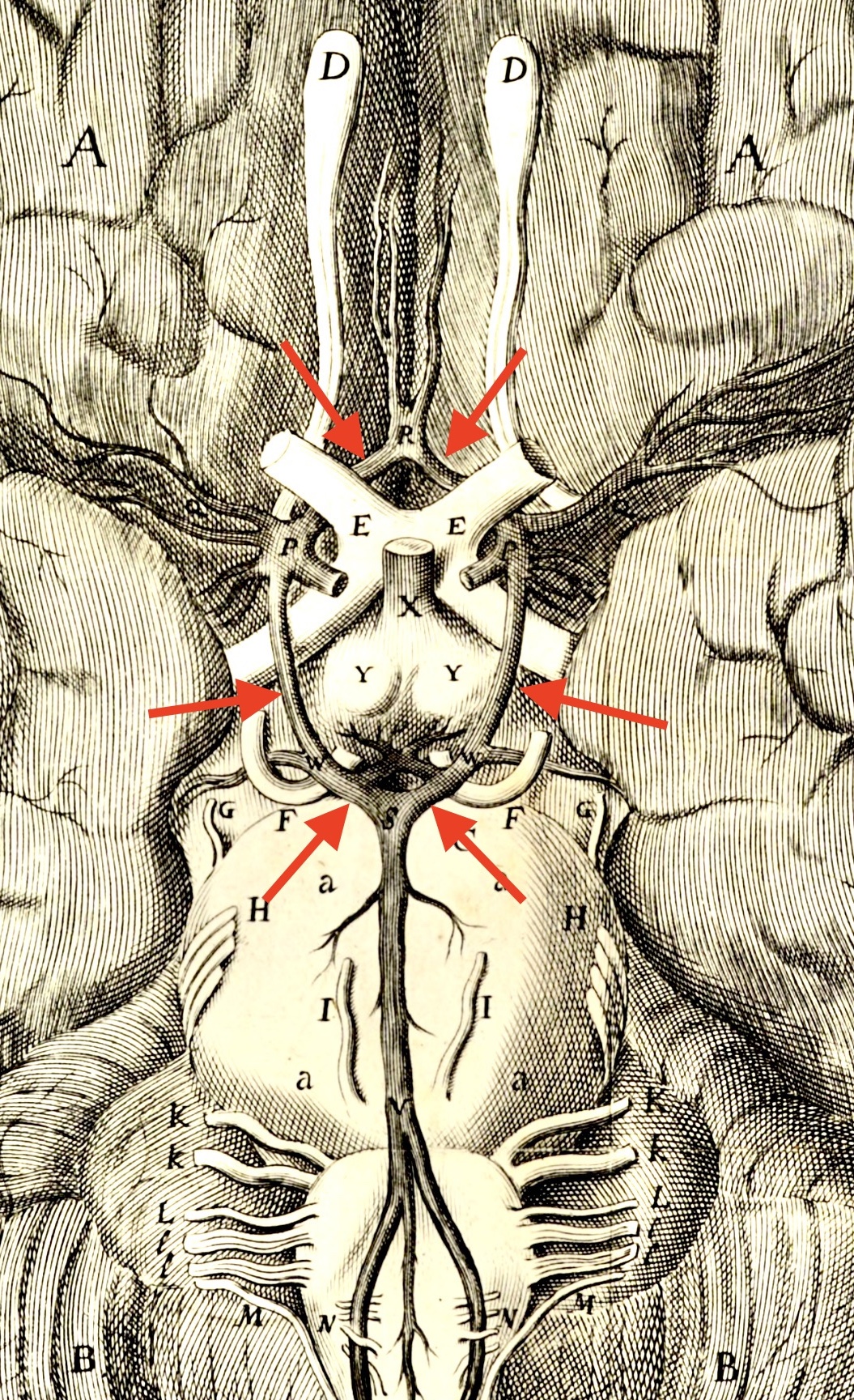
Base of the brain, as illustrated in Thomas Willis's Cerebri anatome, 1664. The features shown in this image [adapted from The Wellcome Collection] should appear famiiar to modern students of neuroanatomy.
The circle of Willis (red arrows) is a ring of interconnected arteries whose redundancy may help balance blood flow into the brain.
- A, A: lobes of cerebrum
- a, a, a, a: pons
- B, B: cerebellum
- D, D: olfactory lobes
- E, E: optic nerves at optic chiasm
- F, F: oculomotor nerves
- P, P: junctions of internal carotid arteries with circle of Willis
- Q, Q: middle cerebral arteries
- R: junction of anterior cerebral arteries with circle of Willis
- S: junction of basalar artery with circle of Willis
- V: basalar artery
- W, W: junctions of posterior cerebral arteries with circle of Willis
- X: pituitary stalk
- Y, Y: mammillary bodies
Historical note: The 1600s famously saw the rise of physical and medical sciences. Thomas Willis founded the modern discipline of neurology with his pioneering work, published in 1664: Cerebri anatome: cui accessit nervorum descriptio et usus [Anatomy of the brain, including description and use of nerves]. The images in this volume were drawn by Christopher Wren, the future architect of St. Paul's Cathedral in London. Willis's colleague at Oxford, William Harvey, established the circulation of blood. Willis himself is commemorated in the eponymous circle of Willis.
